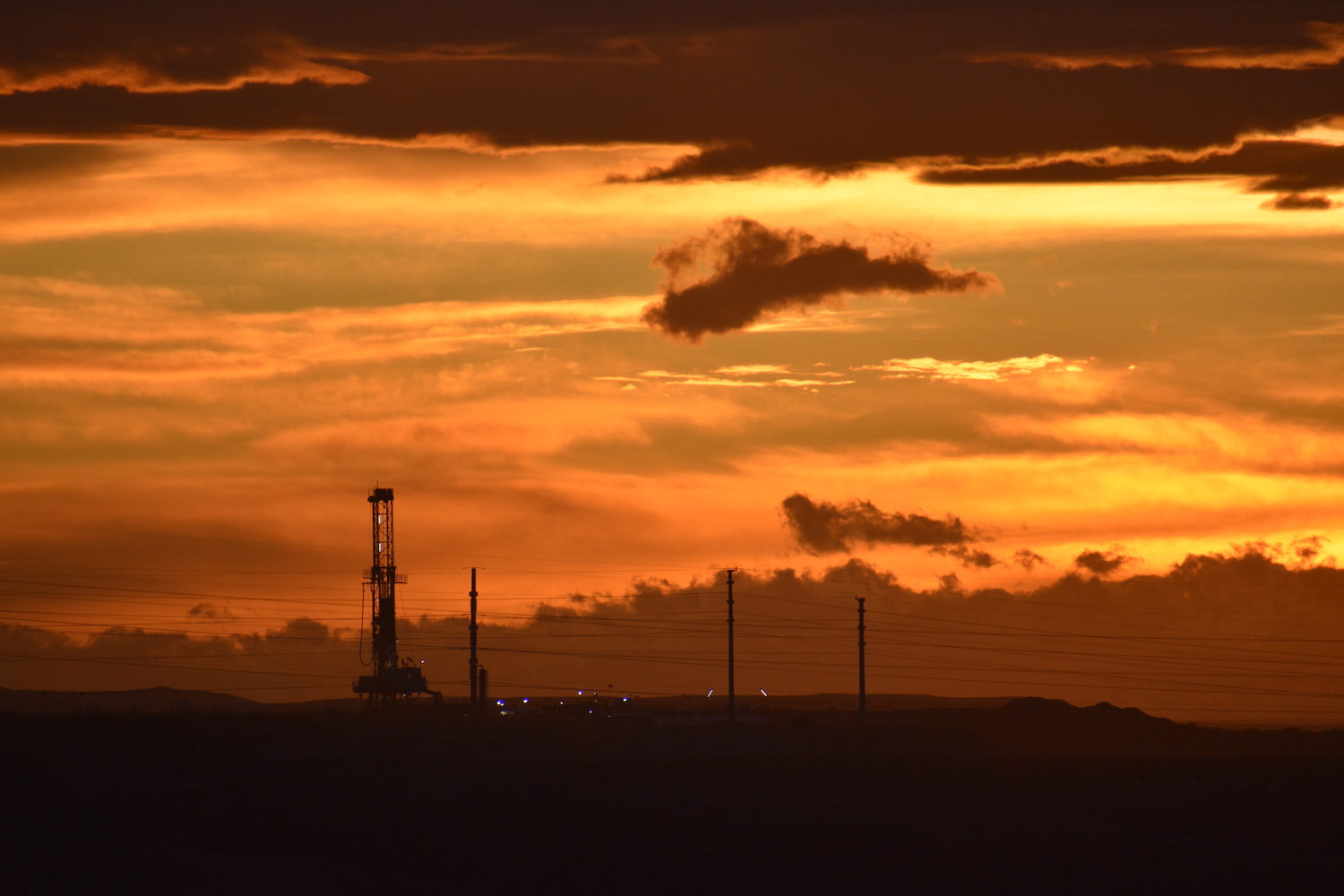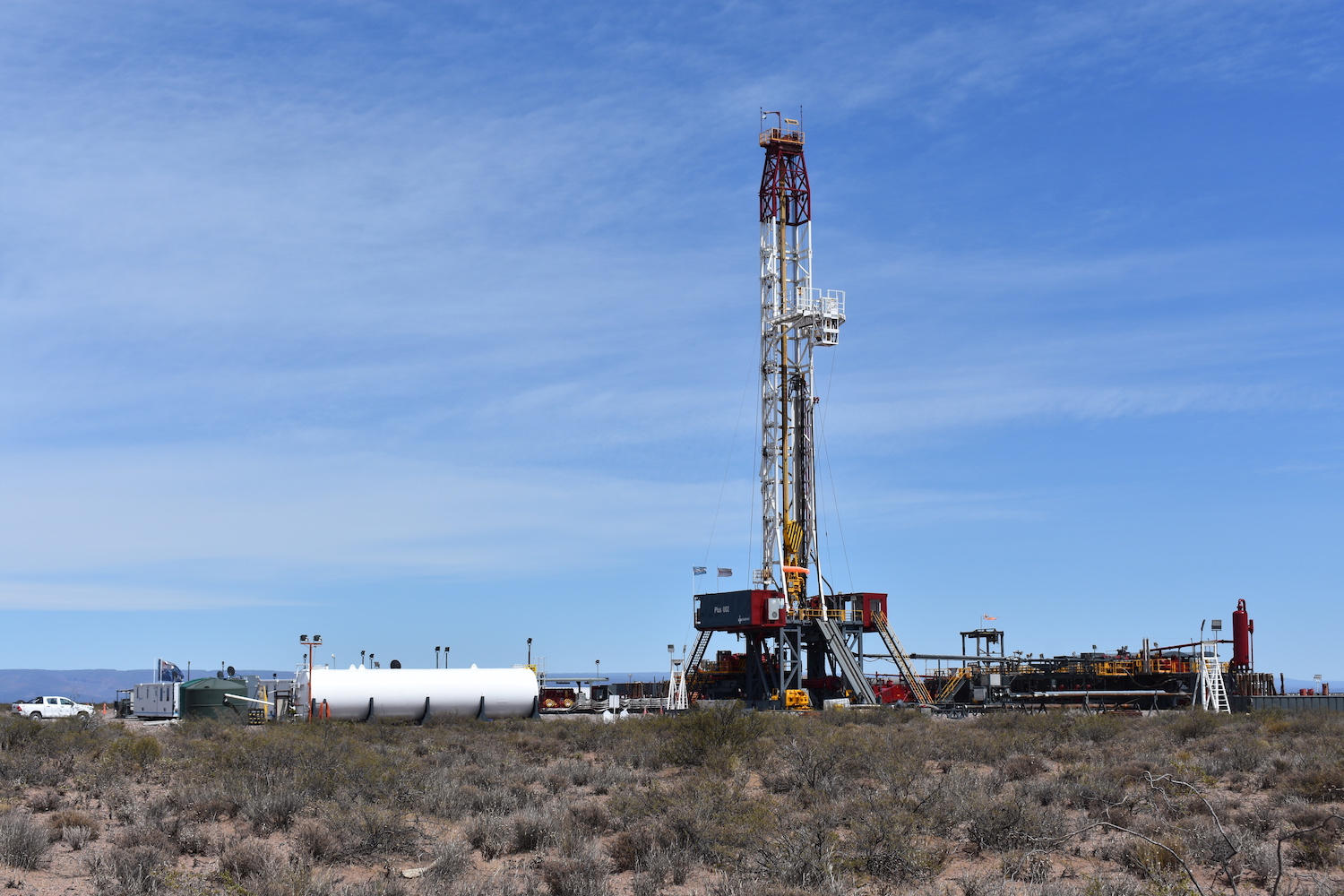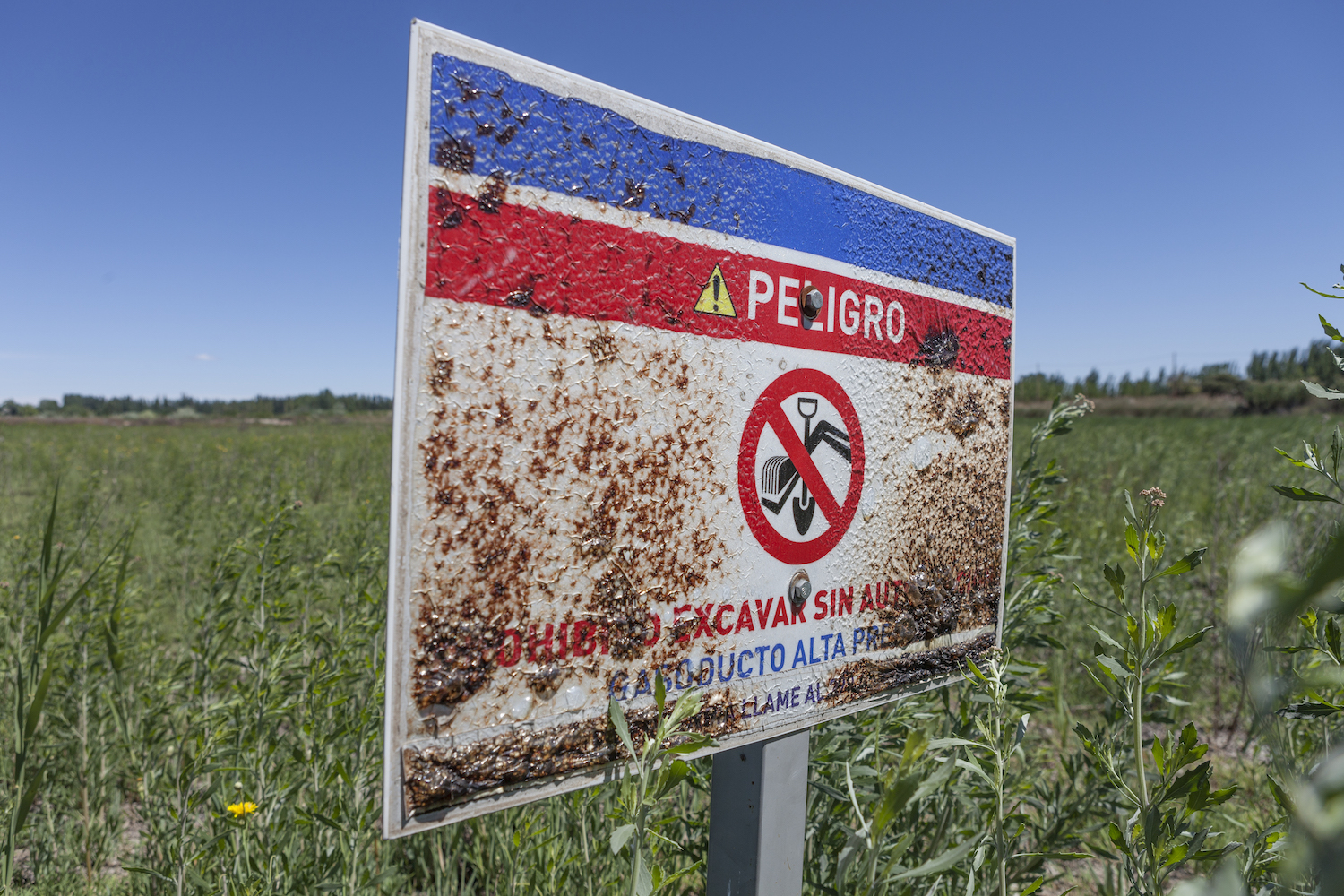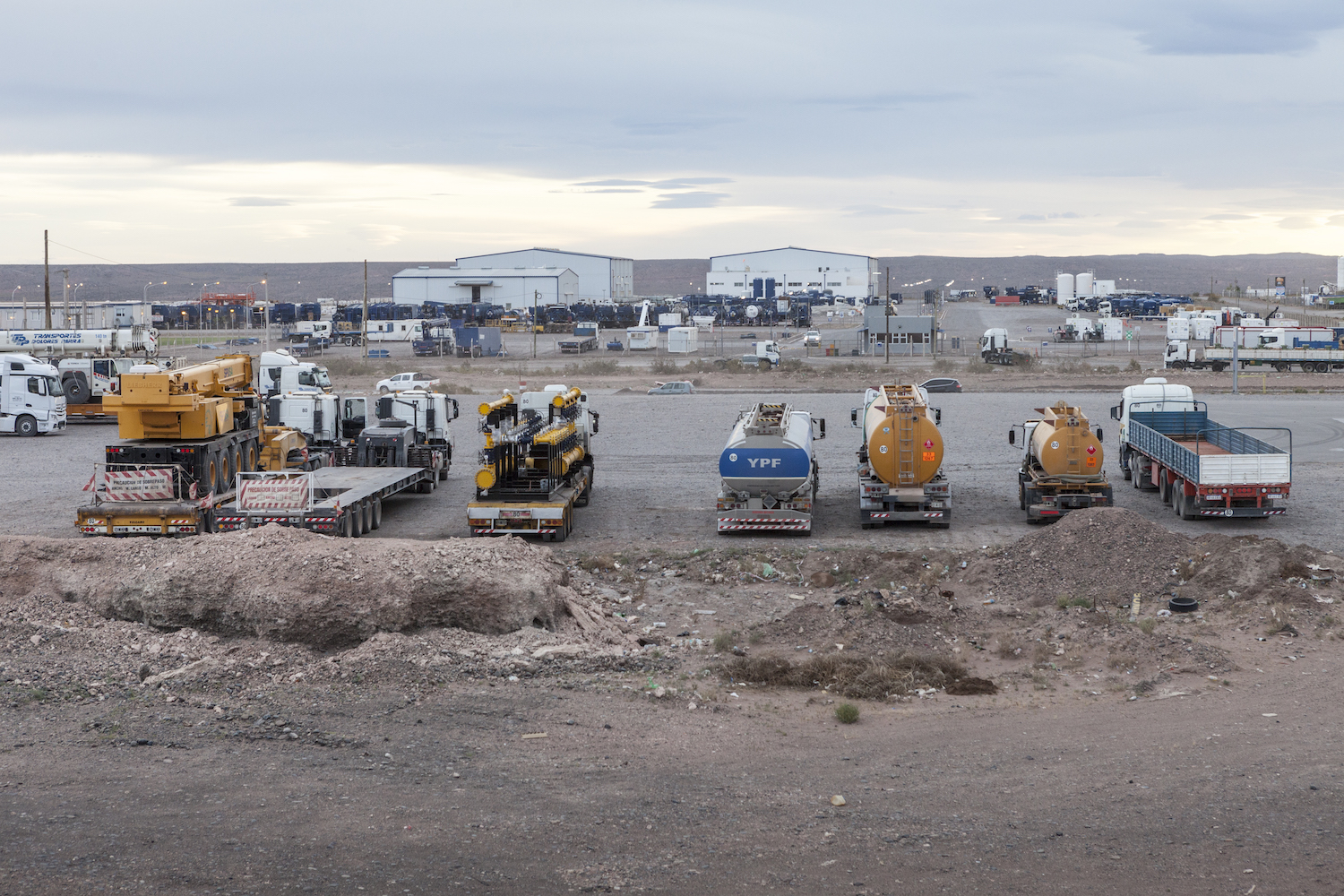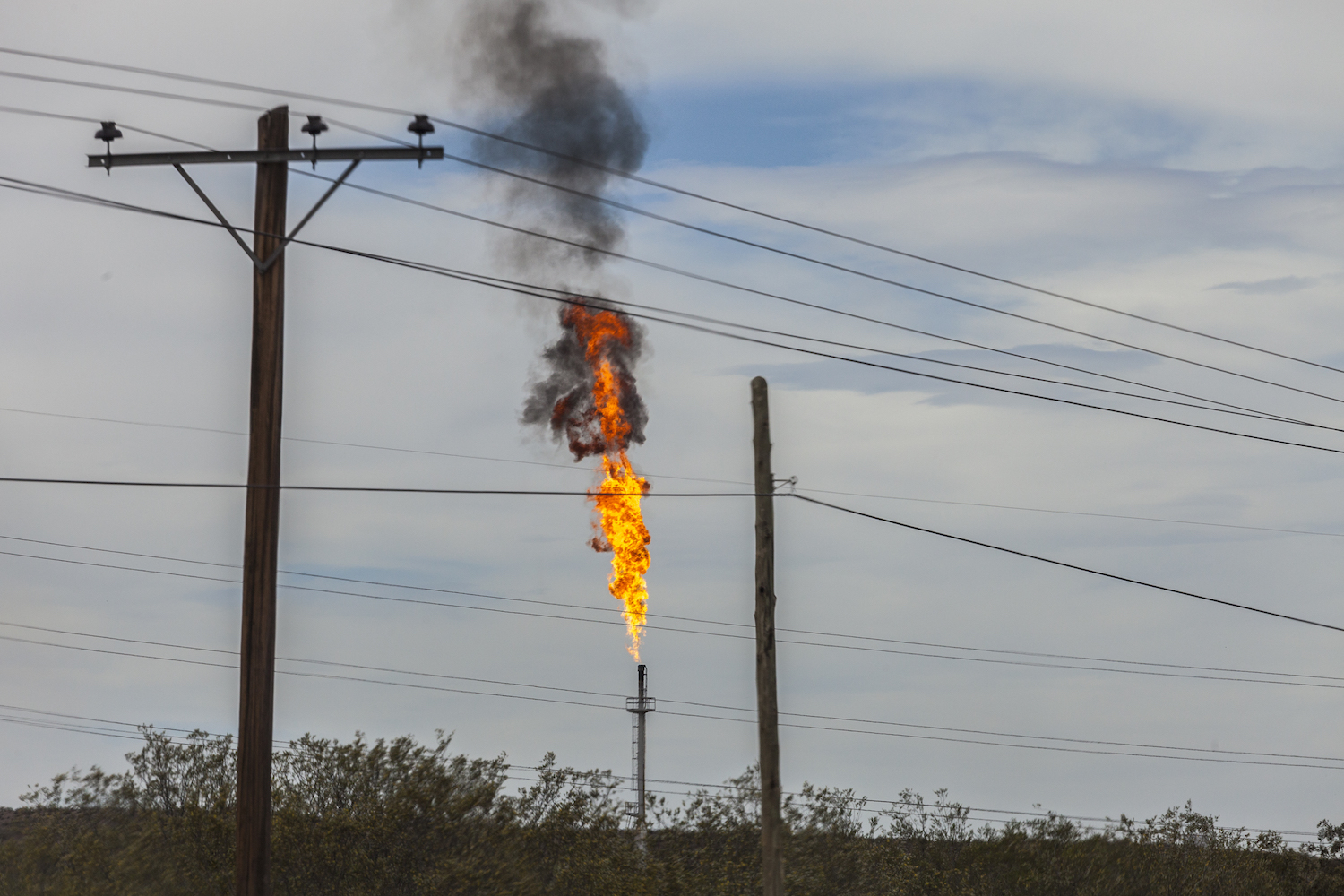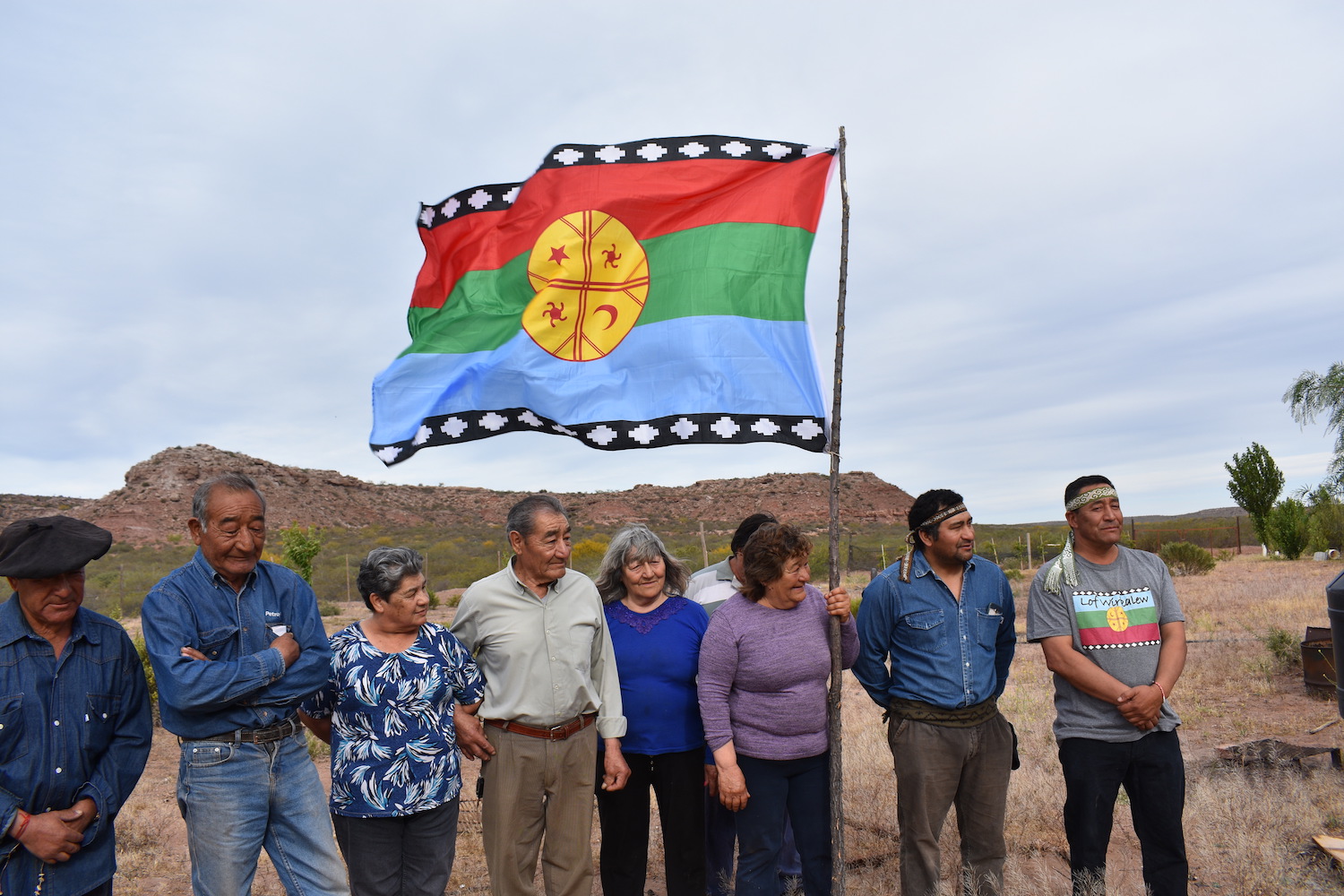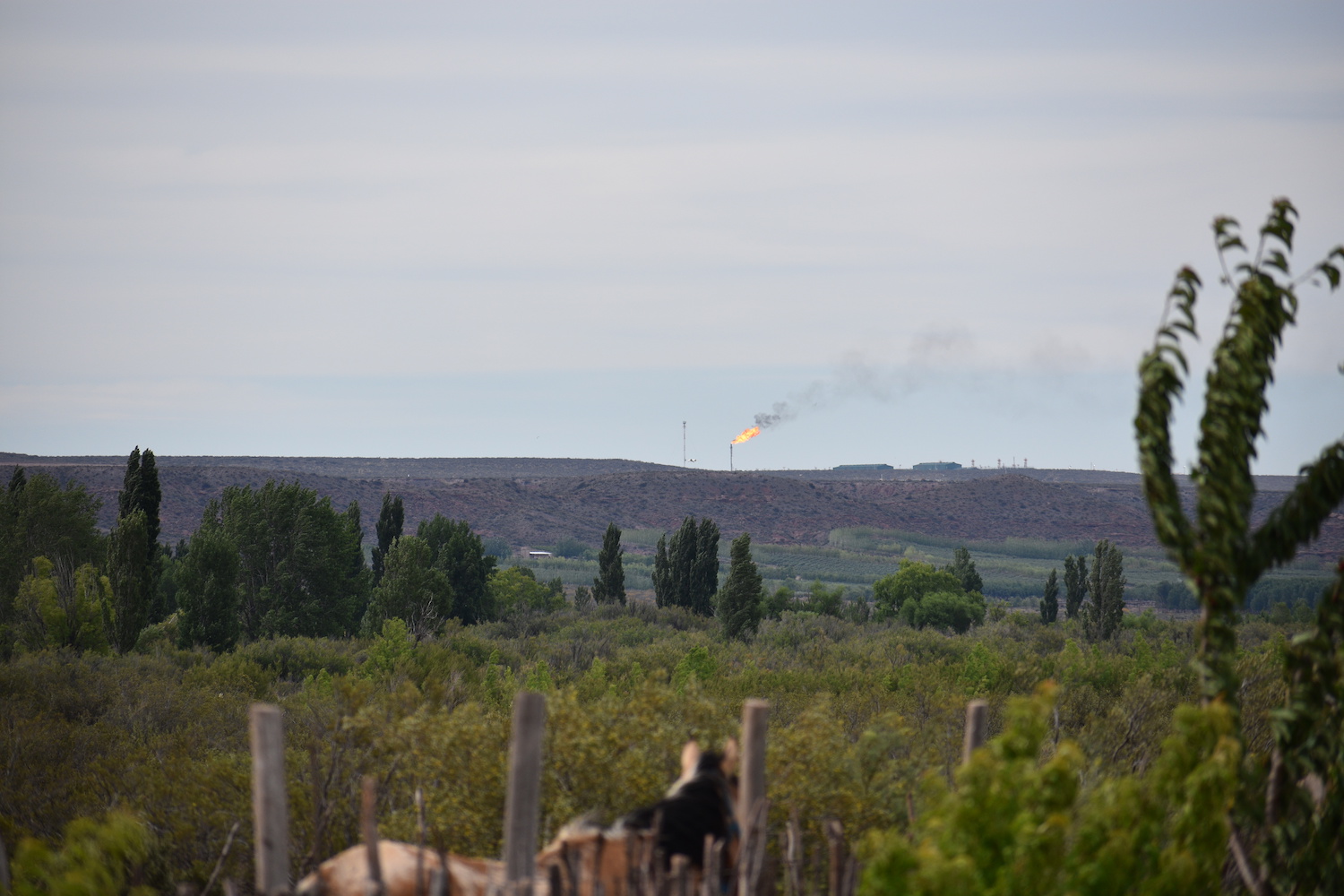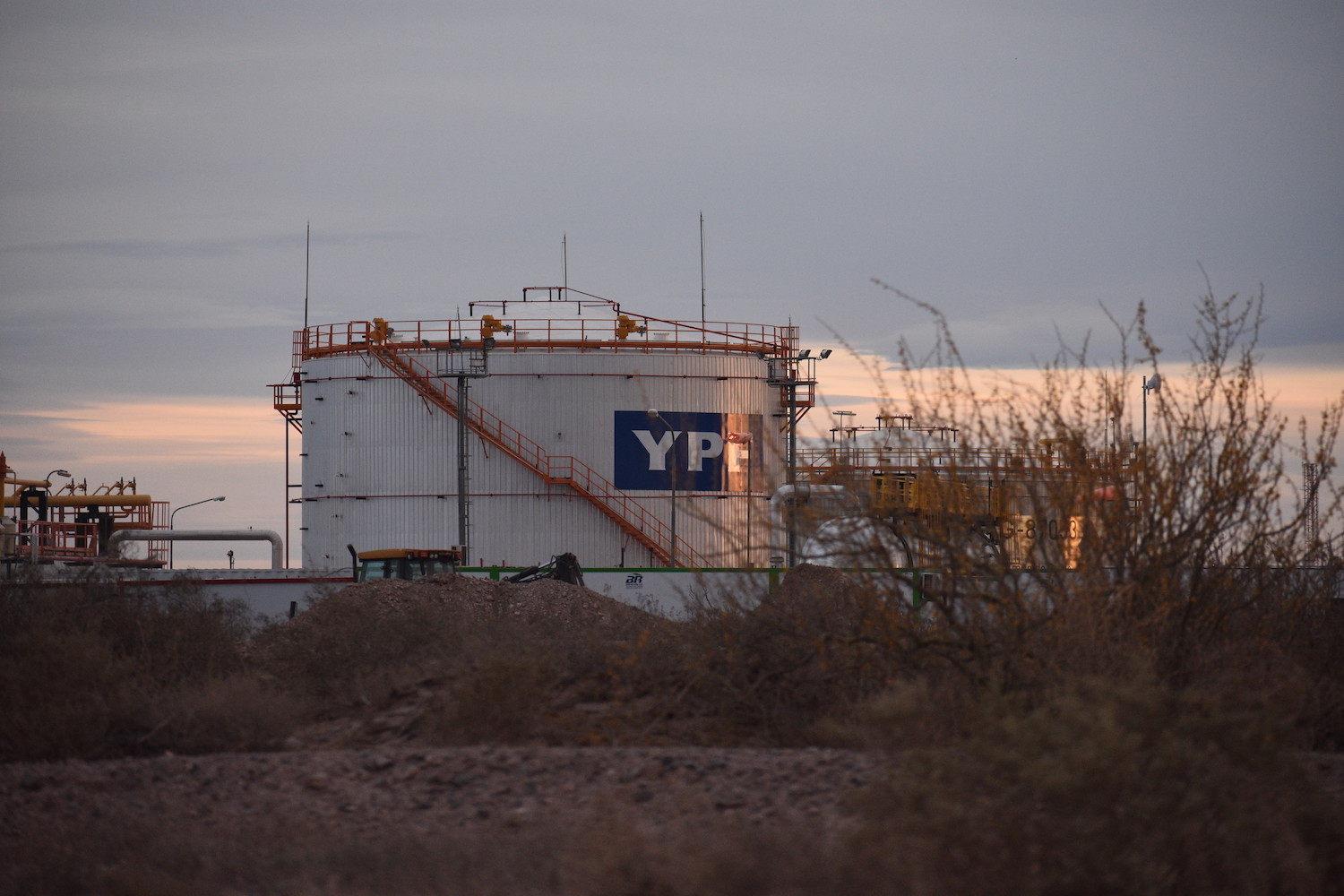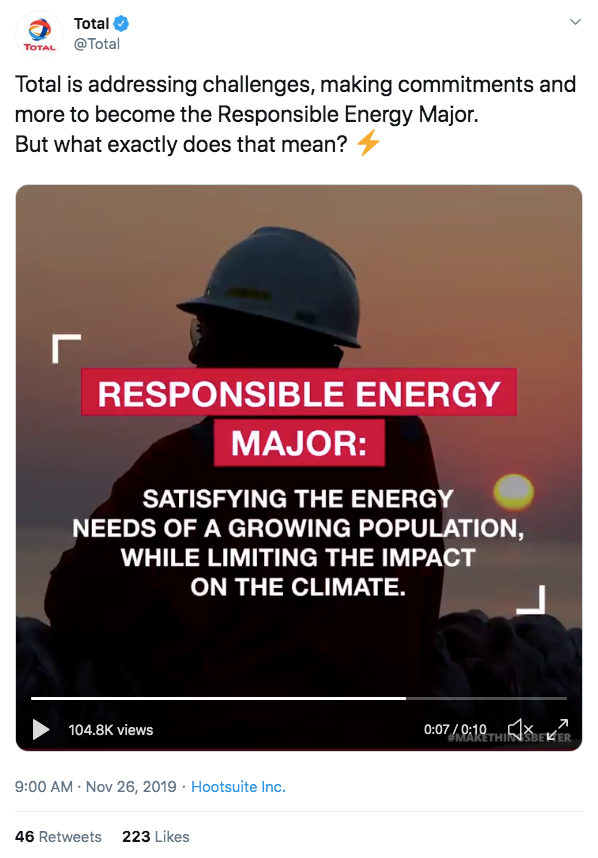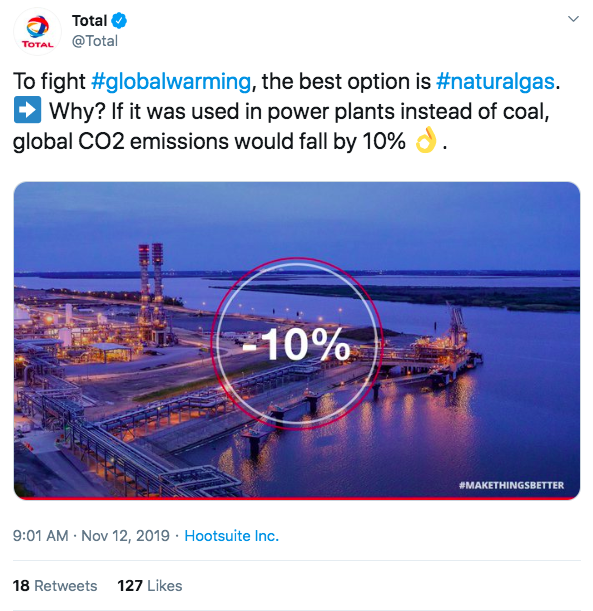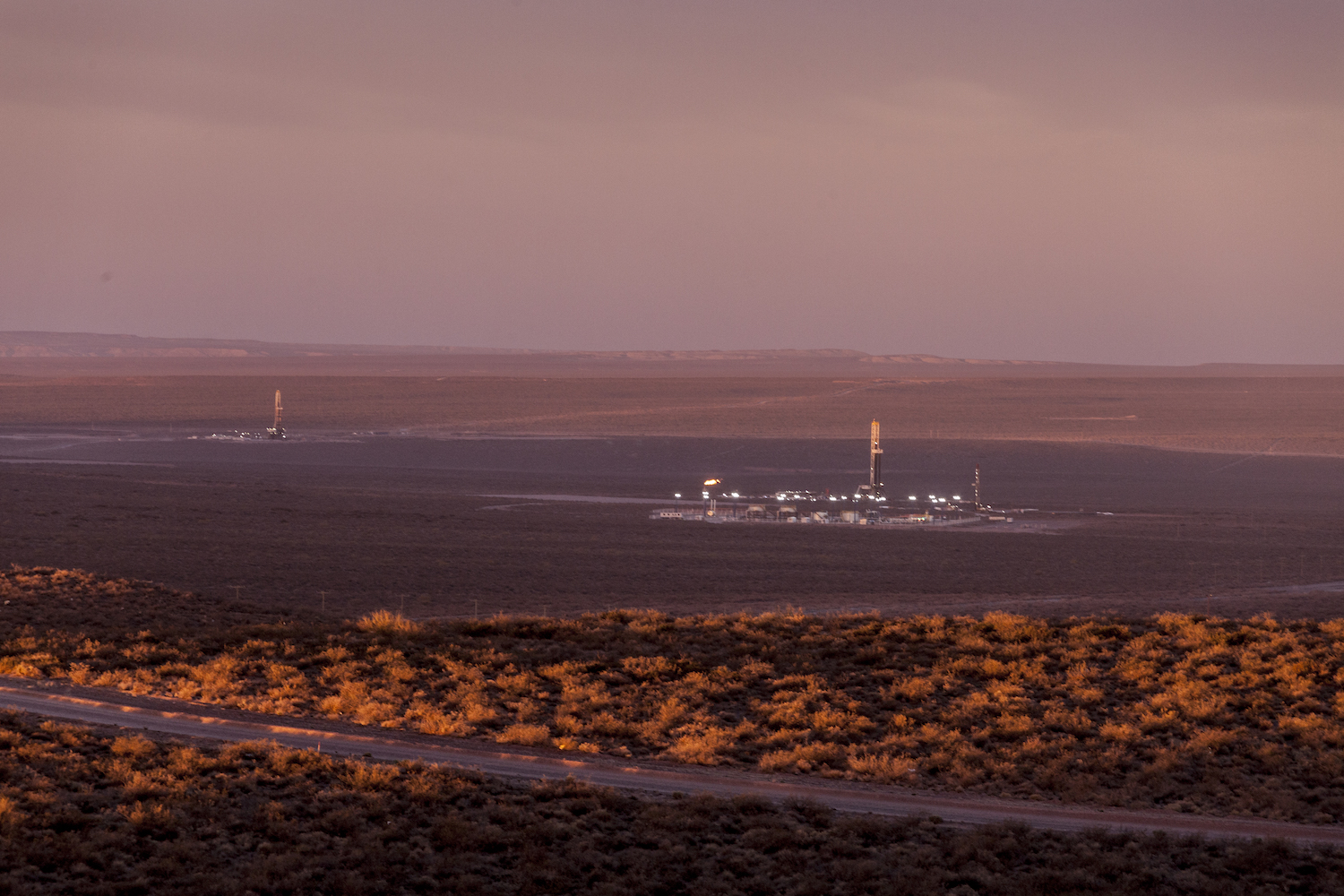Even as international climate negotiators tried to make progress at the UN climate summit in Madrid in early December, fossil fuel production and consumption has continued to rise, and major oil companies have been seeking new horizons to exploit.
The industry is not slowing down, even in the face of the worsening climate crisis. Although many oil companies signed on to the Paris Climate Agreement, they have simultaneously poured $50 billion into projects since 2018 that are not aligned with climate targets. The industry also has plans to invest $1.4 trillion in new oil and gas projects around the world over the next five years, despite the fact that existing projects contain enough greenhouse gases to use up the remaining carbon budget.
In other words, the oil majors are actively betting on, and are heavily invested in, blowing past climate targets and burning as much carbon as possible, despite protestations from company executives that they are good-faith actors.
One of the new frontiers that the oil majors hope to open is Argentina, home to the second largest reserves of shale gas in the world, and the fourth largest oil reserves. In fact, there are only a handful of countries where fracking is commercially active, and Argentina is widely considered to be one of only a few countries that might replicate the U.S. shale boom, which recent research has tied to a spike in climate pollution.
But, the fracking bonanza in Argentina is in its early stages. The Argentine government’s Energy Plan aims for 1.1 million barrels per day of oil production from Neuquén province by 2030, along with 14.1 billion cubic feet of gas per day. That would require a tripling of the number of rigs from 2018, tens of billions of dollars of new investment, and thousands of wells drilled each year. These figures mean that Argentina could add roughly the equivalent of another Bakken or Eagle Ford shale to the global energy mix.
Developing the Vaca Muerta shale’s oil and gas reserves is in early stages, but a U.S. government loan will help one company drill 110 wells in the basin. Credit: Nick Cunningham
Successfully pulling this off, which is far from assured, would exacerbate the climate crisis, for which wealthy economies like the U.S. are largely responsible. There is around 50 billion tons of CO2 trapped in the ground in the Neuquén basin, equivalent to around 1.5 times the annual emissions of CO2 from the global energy sector. Viewed another way, if Argentina’s shale reserves are developed to their fullest extent, it would use up the equivalent of 11 percent of the world’s remaining carbon budget, according to the Global Gas and Oil Network. Argentine activists have referred to it as a “carbon bomb.”
Extracting carbon on that scale requires a gargantuan buildout of infrastructure. Fracking requires an extensive supply chain, including waste dumps, compressor stations, pipelines, storage tanks, frac sand mines, long distance trucking and rail, refining and petrochemical plants, and liquefied natural gas (LNG) export terminals. Residents of Pennsylvania, Texas, Ohio, and North Dakota are likely familiar with this toxic spider web that multiplies and stretches across towns, and then across states, searching for a refinery or a coastline for export.
But in Argentina, much of this has not been built yet.
A sign warning of the danger of an underground natural gas pipeline. Credit: Eduardo Carrera
Industry trucks outside a gas station just above the oil boomtown Añelo, near YPF‘s Loma Campana drilling site in the Vaca Muerta. Credit: Eduardo Carrera
Argentina’s Flaring Problem
As international pressure on fossil fuels mounts, the oil majors have scrambled to cast their rising investments in natural gas as part of the solution, not the problem. However, recent reports suggest that natural gas is offsetting the reduction in CO2 from shuttered coal-fired power plants. Worse, the natural gas supply chain leaks methane, a powerful greenhouse gas, at every stage of its operation.
One of the most conspicuous ways in which the shale industry is driving climate change is through the practice of flaring and venting gas at the wellhead. In the Permian basin in West Texas, the industry flared 752 million cubic feet per day (MMcfd) in the third quarter of 2019, a massive sum that exceeds what all households in Texas consume each day.
Drillers in in Argentina’s Vaca Muerta shale are readily flaring, or burning, natural gas in oil fields much like in Texas and North Dakota oil patches. Credit: Eduardo Carrera
As Argentina seeks to replicate the American fracking frenzy, drillers in the Vaca Muerta have followed in the footsteps of Texas and North Dakota in their practice of rampant flaring, which perhaps shouldn’t be surprising since a lot of the players are the same.
In the Vaca Muerta, flares dot the horizon, lighting up the night sky as they burn off thick black plumes of smoke. And like the U.S., companies in the Vaca Muerta are increasingly targeting oil as the region lacks adequate pipeline infrastructure for gas. That means that the flaring will likely grow worse with time, as unwanted gas is simply emitted into the atmosphere.
Of course, along with the proliferation of fracking comes a corresponding increase in leaks of methane. Using Optical Gas Imaging cameras, the environmental nonprofit Earthworks recorded leaks at more than a dozen sites in the Vaca Muerta in 2018.
The ever-expanding fracking complex will also exact an increasingly negative toll on the people that live in the industry’s shadow. In particular, Indigenous Mapuche communities have lived in parts of Neuquén long before the drilling rigs arrived. Fracking has occurred on Mapuche territory despite their opposition, and Mapuche communities have reported ill health effects, both for people and for their animals, due to contamination to air and water. The Indigenous resistance is ongoing, and these communities will still be living with the toxic legacy on their ancestral homeland long after the drilling rigs depart.
The Mapuche community of Lof Wirkalew in Argentina. Credit: Nick Cunningham
Flare as seen from the Mapuche community of Lof Wirkalew in Argentina. Credit: Nick Cunningham
More Drilling in the Face of Climate Crisis
One of the largest hurdles standing in the oil and gas industry’s way in Argentina is poor economics. Because of the Vaca Muerta’s high costs, and because of the country’s unique investment risk, international oil companies have been cautious about spending heavily in Argentina.
But state-owned YPF can only do so much. If Argentina is going to successfully replicate the U.S. fracking boom, it will very much depend on drilling from the international oil majors, including ExxonMobil, Chevron, BP, and Royal Dutch Shell, among others.
State-controlled YPF‘s and Chevron’s Loma Campana site is the Vaca Muerta’s most important drilling operation. Credit: Nick Cunningham
One of the oil majors operating in Argentina’s Vaca Muerta is the French oil giant Total SA, which is one of the world’s 20 largest contributors of total greenhouse gas emissions since 1965, according to The Guardian.
Total offers an intriguing case study — an oil major going out of its way to position itself as a climate leader, while simultaneously clinging to its core business.
Total says that its “ambition” is to become a “Responsible Energy Major,” which means providing energy that is “affordable, reliable and clean.” Total publishes a glossy report each year trumpeting its progress on climate change. As it eyes a long-term transition, the French company is making modest investments in renewable energy. CEO Patrick Pouyanné recently penned a commentary on LinkedIn, talking up his company’s efforts on cutting emissions.
The company’s Twitter account is littered with feel-good messages about progress towards a clean energy transition.
Total’s Twitter account sharing a video about being a “Responsible Energy Major.” Credit: Total on Twitter
A November 2019 tweet from Total about using natural gas to fight global warming. Credit: Total on Twitter
On the surface, Total seems to take the energy transition seriously, at least compared to its retrograde American counterparts. However, even though Total appears sincere, the French major is making massive bets on oil and gas projects, with a particular focus on LNG. These projects have life expectancies that span decades.
“Natural gas is at the heart of Total’s strategy,” Pouyanné said at a gas conference in Shanghai in April. “We want to be integrated along the gas value chain to take full advantage of this growing energy source and discover new [liquefied natural gas] outlets.” A month later, Total spent $8.8 billion acquiring natural gas and LNG assets in several countries in Africa.
Total’s oil and gas production hit a record high in the third quarter and is expected to rise by 9 percent in 2019 compared to a year earlier. In November, when the European Investment Bank announced that it would no longer finance natural gas projects, Total denounced the move, calling it a “poor decision.”
CEOs at the top oil companies talk about how they are transitioning as fast as possible. But in reality, there is no intention of slowing down.
In Argentina, for instance, the industry has 35-year concessions and they are planning for the long haul. “Total is committed to developing and producing these unconventional resources in a safe, optimized, and responsible manner,” the company says in a Vaca Muerta promo video. “It will take several thousand wells to produce all of the reserves, over several decades.” Total received more than $300 million in subsidies from the Argentine government between 2016 and 2018.
After an email exchange with Total Austral, the Argentine unit of the company, DeSmog was referred to the parent company in Paris. Several requests for comment went unanswered.
What Will Be Argentina’s Shale Future?
To be sure, Total’s oil and gas production in the Vaca Muerta is minor compared to what it produces elsewhere around the world. But that’s precisely the point. Argentina’s shale story is in its earliest chapters and companies like Total plan to fully exploit the reserves underground, even as the science on climate change calls for steep emissions reductions.
And as Texas, North Dakota, and Pennsylvania demonstrate, as the industry grows, economies become locked into carbon-intensive industries, which are perilously difficult to unwind. The political process becomes corrupted, with policies reoriented to serve the industry.
Well pads dot the landscape across the Vaca Muerta shale. Credit: Eduardo Carrera
Going full speed in Vaca Muerta “is critical not only because it would increase fossil fuel emissions three-fold … but mainly because the country will get into a fossil development path (or extend the current one) from which it is extremely difficult to get out for decades to come,” said Gabriel Blanco, a Professor of Engineering at Universidad Nacional del Centro de la Provincia de Buenos Aires (UNICEN) and a contributor to the 2014 UN Intergovernmental Panel on Climate Change (IPCC) report. “Infrastructure and technology lock-in, in addition to stranded assets, are well-known processes that almost all countries are suffering.”
The oil majors have switched from overt climate denial to something more insidious: lip service to climate action but otherwise business as usual. There is no talk of an actual transition, which would require scaling down oil and gas production. Instead, the industry discusses making the fracking complex slightly cleaner and continues to scour the globe for new frontiers to exploit.
The Argentine story is not yet written. The multinational oil companies operating in the Vaca Muerta are currently demanding more attractive incentives and legal protections from the state, which could be used to justify more drilling, a large buildout of infrastructure, and maybe eventually even an LNG export terminal. After meeting with oil executives, the new national government proposed on December 18 to cut taxes on the industry, in an effort to stimulate more drilling.
A flare at YPF‘s gas separator plant in Tratayen near Añelo. Credit: Eduardo Carrera
There is largely a national consensus on moving forward with Vaca Muerta, with political support in both Buenos Aires and at the provincial level. But the poor economics may keep the oil majors on the sidelines, at least until the government forks over even more. There is talk of new legislation to protect the industry’s investments, a so-called blindaje, or “shield,” which would offer guarantees and further incentives.
Environmental groups decry the absurdity of a country, in the midst of an economic crisis, handing over more incentives to highly profitable multinational oil companies. “It is worth asking not only how likely it is that these infrastructure investments will eventually arrive, but also what kind of financial efforts and regulatory sacrifices will they require from the State,” Mariana Fernández and Facundo López Crespo, researchers with Enlace por la Justicia Energética y Socioambiental (EJES), wrote in a report.
Nevertheless, with the U.S. shale industry facing somewhat of a mid-life crisis, places like Argentina beckon. Oil companies emphatically pledge their commitment to climate targets, but in Argentina they hope for a rerun of the fracking bonanza.
This reporting was made possible in part by funding from Periodistas por el Planeta.
Main image: Fully developing Argentina’s shale reserves would use up the equivalent of 11 percent of the world’s remaining carbon budget. Credit: Nick Cunningham
Subscribe to our newsletter
Stay up to date with DeSmog news and alerts


